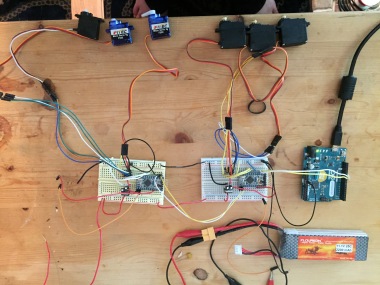
I am exploring how embodied cues such as the bending of a spine can provide anticipatory information to a viewer.

This project is exploring how physical computing can indicate intention, as a shifting of weight, in a 3D printed spine. This spine will reside on a segway-like 2-wheel base that will allow its control spatially, and will use the spine bending as a cue that it is about to shift weight in order to change direction. The amount of bend/ number of joints in motion will indicate the amount of turn. This work continues to explore the importance of embodied gestures in applications for performance and games.
Published by gregcorness
Greg Corness is a Researcher and Artist working with embodied interaction in media environments. His background in music, theatre and dance provides the basis for his research which focus on interdisciplinary improvisation, distributed cognition in performance, and methodologies for researching experience in performance. He is particularly interested in investigating performer’s intuition during improvisation and how to leverage this embodied knowledge in their interactions with autonomous computer systems. He has developed several generative sound systems as well as computer vision and tangible interfaces for use in interactive performance and installation works. He has published in the fields of electronic music and human-computer interaction and his work includes galleries installations, interactive museum exhibits and live performance in Canada and the US.
View more posts

